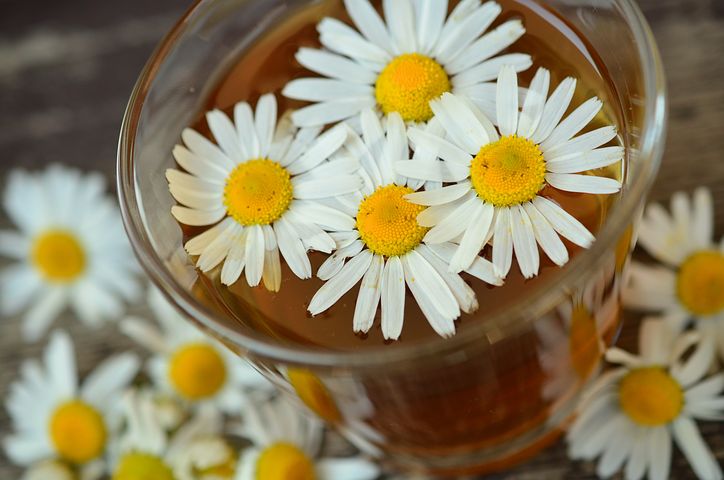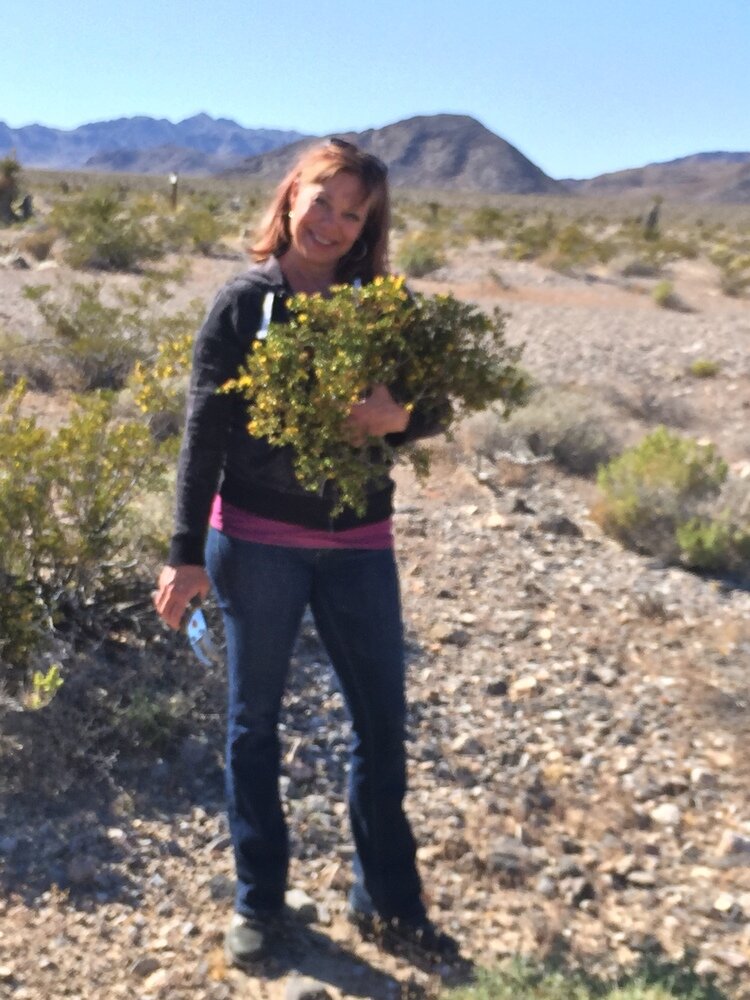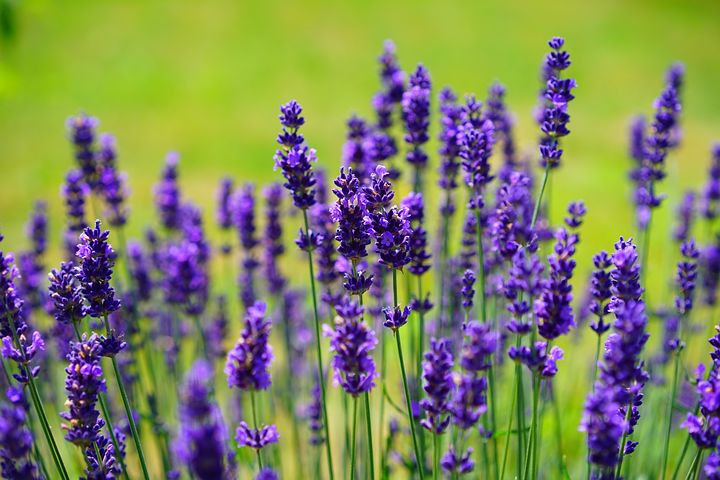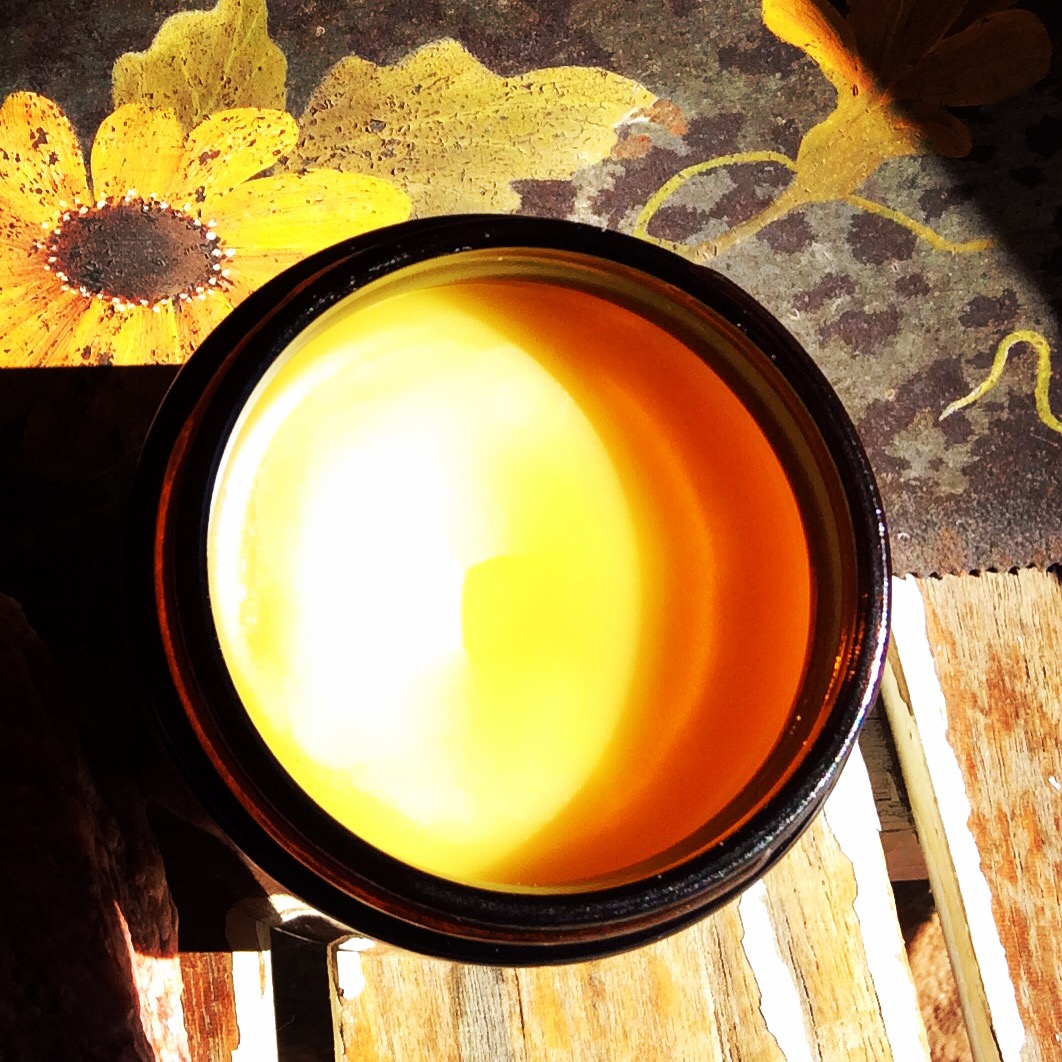The 18 BEST Herbs to Infuse in Your Homemade Skincare Products
Here’s a list of the 18 best plants to use for your homemade skincare products! Whether you’re making salves, lotions, handmade soap, serums, or massage oils….herbs can make them even better due to the specific quality of the plants. Here are my favorites to use in homemade body products.
One of the first herbal preparations I ever tried to make over a decade ago was a salve. At first, I was a bit intimidated, but then I realized it’s really quite simple. In fact, it’s plain hard to mess it up. But what REALLY intimidated me most was choosing which herbs to infuse in the oils I used to create the salve.
I knew about Lavender, of course, but what about ALL the other herbs out there?
So I’ve decided, after many years of creating salves, butters, and balms with herbal infused oils, experimenting and making some mistakes (and learning from them) and also having lots of successes….that I would share my favorite herbs to use in infused oils with you.
**If you are new to using herbs, you should take a look at How to Make Herb Infused Oils, as this is a necessary prerequisite for making infused salves, balms, and butters. You’ll want to decide on the infused oils you want to keep on hand so you can whip up an herbal salve or other topical preparation in no time!
Herbal infused oils (and sometimes teas in the case of lotions such as Rose-Calendula Body Lotion) are the base for most body care products, so you’ll want to learn this easy craft!
You may also enjoy this related article: The Best Oils & Butters to Use for Your Homemade Soaps & Salves.
Why Use Herbs in Your Homemade Body Products?
You can certainly make simple salves and butters without using any herbs at all. These will be similar to petroleum jelly (without the toxins, of course), as they’ll consist of a carrier oil (like olive or sunflower oil) and a wax of some kind (like beeswax or candelilla).
This means they won’t include the medicinal properties of the plants you choose, though, and therefore won’t be nearly as powerful for certain things, like healing a wound or burn, soothing a headache, or providing some relief from pains. However, plain salves and balms can still be fabulous for your skin.
Using herbs and plant parts (and essential oils) in your body care preparations not only provides medicinal, skin soothing, moisturizing, and anti-microbial qualities to your creations, but also adds some color and scent (in the case of essential oils).
These added factors from the plants you choose play a crucial role in enhancing the medicinal, aesthetic, and aromatherapy properties of your product.
Herbs that can be safely used to enhance the benefits of your salves, oils, butters, and body balms grow all around us! You might have some growing in your own garden right now, or perhaps they grow in nearby areas.
There are numerous plants that can be used to create useful medicinal or beauty products. In fact, if you can eat a plant, it can probably be used in your herbal body care creations.
I am always amazed at how my herbal salves out-perform the common store-bought ones, too.
Following is a list of some my favorite plants you can use to infuse in your oils when you make your own herbal salves, butters, and balms.
**Essential oils are another plant based material you can add to your body care products if you like, too. If you would like a list of essential oils that are wonderful and safe to use in body products here’s a little list of other related articles to visit and enjoy when you have a moment:
The Best Essential Oils for Wrinkles and Skincare
Best Essential Oils for Your Mood and Emotions
20 Best Essential Oils to Scent Soap Naturally
FTC Disclosure: There are affiliate links scattered throughout this article. If you click through and make any kind of purchase, I may earn a small commission at no extra cost to you.
Download this free herbal remedy guide and handy cheat sheet for 10 common herbs. It includes safe, effective remedies you can start making today! Click here to get yours now!
Here is the best list of easy to find herbs to use to make your handmade soaps, salves, and body care products! All about each herb and why it is useful in your homemade skin care products. How to use herbs for your natural health and body. #healingharvesthomestead #herb #herbal #salve #healing #balm #butter #bodybutter #bodybalm #skincare #bodycare #howtomake #howtouse #herbs #tomake #gift #homemadegift #holidaydiy #diy
What are the BEST Herbs to Use in Your DIY Salves, Oils, Butters, Creams, Lotions, and Balms?
This certainly isn’t a complete list, as there are SO many useful herbs out there that are wonderful for skincare and medicinal purposes as well. But these are the herbs I use most often and are common additions to salves and other homemade skincare items.
Are you wondering where to buy herbs? Well, my main supplier for herbs I don’t grow or forage myself is Starwest Botanicals. They also have culinary herbs in bulk that are high quality and will save you money!
The links within the article are for Amazon, for your convenience.
CALENDULA:
One of my favorite flowers to use in making all kinds of herbal products, Calendula is incredibly soothing and healing to the skin because it has antibacterial and anti-inflammatory properties. It may help certain skin conditions such as eczema.
Calendula is thought to help skin regenerate more quickly after injury because it helps promote the repairing of skin cells. It’s safe for using on babies and is a common ingredient in healing salves, including diaper rash ointments.
You can see my Citrus Dream Soap Recipe that is colored yellow from the Calendula.
CAYENNE:
Ouch! You might be thinking! That’s a hot herb! And yes, it is.
But cayenne contains capsaicin, which is excellent for soothing joints and sore muscles. It also has analgesic properties. You can find out more about Cayenne’s healing properties in How to Make Your Own Natural Quikclot and How to Make a Pain Relieving Salve.
Besides being a helpful pain soother, cayenne can be helpful by increasing and enhancing the circulation of the skin.
CHAMOMILE:
This sweet-smelling plant has small white flowers which are used along with the leaves to make teas, tinctures, and topical preparations such as salves. There is some evidence that chamomile may have effects similar to cortisone.
Like Calendula, Chamomile also has anti-inflammatory and antiseptic properties. Used internally, it is soothing to the nervous system and is a relaxing herb commonly used in teas. The essential oil can be used as well as the herb. Here is my recipe for Relaxation Tea, which uses Chamomile herb.
Here is my homemade soap recipe: Chamomile Infused Hot Process Soap, if you’d like to check this skin soothing bar out!
CHAPARRAL:
I grew up with this desert plant growing in my backyard. With its ability to survive the harshest conditions in the Mojave Desert, it has become a plant well-known to be helpful in a variety of ways.
A tea made with chaparral is wonderful for skin irritations and sunburn. It has antibacterial properties, as well. Used in a salve or liniment, it helps with wound healing, soothing itchy rashes, and infections. Some people believe it may help with skin cancers, but I suggest working with your doctor as well.
Find out how to identify and forage chaparral here, so you can find the best plants for your skincare needs. If you need to purchase it (it grows in rather limited ecosystems, like Mojave and Sonoran Deserts), I suggest purchasing it from local herb shops where it grows. You can also take a look at Starwest Botanicals.
You can see my directions for How to Make Chaparral Salve here.
CHICKWEED:
This tiny star-shaped flower is a common weed that grows in some very inhospitable places. It’s great for topical preparations because it has wonderful demulcent and emollient properties, making it excellent for skincare.
Demulcent herbs are highly moisturizing, and chickweed is a favorite among herbalists. As a tea, it’s useful in skincare washes, and if you’d like to just drink it I’ve got some great news! It’s extremely high in minerals and is helpful for your bones as well as the health of your skin and hair.
It’s perfect for using to soothe itchy skin, rashes, and eczema. It makes a great addition to diaper rash salves. If you have dry skin, chickweed is your friend!
COMFREY:
Comfrey is high in a substance called allantoin, which boosts cell renewal.
It’s also known as knit-bone, which tells you right there that it has some pretty amazing healing powers. If you are making a healing salve, you’ll probably want to include comfrey in your recipe! You can find out how I use it in this Black Drawing Salve.
You may also enjoy this video on making a powerful comfrey salve for skincare and healing:
DANDELION:
The bright, happy dandelion—-yes, this common weed—-is wonderful for using in your body care and medicinal products. The entire plant has some pretty incredible medicinal uses for supporting the liver and kidneys. The flowers contain a rather high amount of lecithin, and this helps soothe painful, dry or chapped skin when used in making preparations for the body.
Take a look at this recipe for handmade lotion. It’s non-greasy and highly moisturizing. Dandelion Infused Lotion Recipe.
GINGER:
Ginger is warming and soothing. It’s also an anti-inflammatory, and I like to use it in medicinal preparations here and there. It also smells great! Ginger is also a stimulating herb, which means it enhances the actions of the properties of the other herbs you use. You can use the essential oil as well as the actual herb.
For making skincare, I really like using the infused oil as a base for certain massage oils where you want warming, stimulating effects that are gentle and effective.
GOLDENSEAL:
This effective herb is so valuable it has become endangered in its natural habitat. However, it is now being grown in other areas. If you purchase Goldenseal, be sure you buy organic (not wildcrafted) because this helps ensure it’s not further endangering a goldenseal habitat.
Medicinally, Goldenseal has some very powerful antibacterial properties, and is a tincture I always have available in our home. For topical preparations, it’s been used to help with skin infections, wounds, abscesses, eczema, and psoriasis.
I like to use goldenseal along with thyme for making homemade copycat Neosporin.
JUNIPER:
Juniper has some pretty fantastic detoxifying properties for skincare. It helps keep pores clear and balances skin that is oily. Because of this, take care when using on drier skin. I love Juniper—-the scent, the way it works, and it is also great for using sparingly in cooking red meat!
Juniper has a great reputation for helping with cellulite and improving circulation in the lower legs for those who stand much of the day. Here’s a recipe for a scubbing soap that is helpful for cellulite: Cellulite Scrubbing Soap Recipe.
You might like to take a look at this Juniper Body Scrub.
LAVENDER:
Just about everyone loves lavender! And even if you’re not a fan of its pungent floral scent, you can’t deny its healing properties. Lavender is used to calm and support the nervous system and is emotionally uplifting.
Lavender also has excellent antibacterial and anti- fungal properties. It’s useful for soothing headaches caused by stress and helping the body relax for sleep. You can find out how to make a terrific Lavender Salve if you like, and it’s wonderful for soothing bug bites.
Take the FREE Herbal Foundations 5-Day email course, and start creating your own effective and safe home remedies today! Click here to get started! Did I mention? It’s FREE! :-)
LEMON BALM:
Lemon Balm has strong anti-viral properties because of its high level of polyphenols. This helps make it effective for using against viral conditions like herpes and shingles. Using it in salves is wonderful for both its ability to soothe and heal.
My Cold Sore Salve with Lemon Balm & L-Lysine is great to get started making now before cold and flu season strike! In fact, since the sun can contribute to cold sores, you might want to use this during the summer months too!
MINTS:
Both peppermint and spearmint are wonderful for using in salves. The plant can be infused in oil, and the essential oil is useful for cooling and refreshing the mind as well as helping relieve common headache.
I love my handmade peppermint soap, and adding this cooling plant to your salves, lotions, and balms is wonderful during the hot summer months.
Using peppermint in bug repelling balms is also helpful. Most insects don’t like the scent and will stay away, especially in combination with lemongrass and citronella.
PLANTAIN:
This is another common weed found just about everywhere. There are several varieties, and they are all wonderful. Plantain helps draw toxins from the body and is supportive of the liver. It’s helpful for insect bites, painful boils and acne cysts, and infection. It is cooling, soothing, and helps keep the skin moist.
Keep in mind, this is not the banana looking fruit in markets—this is the green leafy weed found in the fields.
Last summer, I was stung by several angry black wasps (very aggressive) and ended up with around seven nasty bite/stings. I immediately made a quick spit poultice, and I believe this cut the recovery time in at least half.
Don’t miss out! Download and print your Free Herbal Remedy Guide and Cheat Sheet which is perfect for your kitchen or home apothecary! Click here to get yours sent to you right now!
RED CLOVER:
Another so-called weed, red clover is exceptionally helpful for soothing skin conditions. It’s also great for menopausal women, because it helps balance female hormones due to the phytoestrogens contained in the leaves. Red clover is a wonderful tea, tincture, or vinegar, as well as being useful in salves and body care preparations.
Here’s my recipe for skin loving Red Clover and Rose Petal Salve.
ROSE:
Roses are not just lovely and sweet smelling. They also help with inflammation, and they make the heart happy. I’d love to try using rose essential oil in skincare products, however, it is extremely expensive.
Therefore, I have to stay happy simply infusing the petals in oils I can use to create salves. If you want an essential oil that smells similar, try Rose Geranium or Palmarosa in small amounts.
You might enjoy making Rose Salve!
ROSEMARY:
Rosemary can be infused in oil and helps support circulation. It’s perfect for massage oils as well as making salves. Because rosemary is a powerhouse when it comes to enhancing circulation, you’ll find it in many cellulite products on the market.
The essential oil can be used too. You can see how to make a Cellulite Oil or a handmade Cellulite Scrubbing Soap using Rosemary.
ST. JOHN’S WORT:
I love using St. John’s Wort as a seasonal aid against the winter blues, but it also has some exceptional antiviral, antibacterial, and anti-inflammatory properties.
I love to use it for neuralgia in topical preparations, and it is useful for herpes and shingles. It is an excellent remedy for helping the skin heal from traumas such as bruises, sprains, and burns. You can find out how to make a great healing salve using St. John’s Wort.
NOTE: St. John’s Wort may cause photosensitivity in some people, especially if ingested.
You can create an herbal tea for helping with the Winter Blues, if you want to learn more about St. John’s Wort.
Also, St. John’s wort is one of the triad of herbs in the famous Trauma Oil. Simply combine arnica, SJW, and calendula in equal parts and create some beautiful herb infused oil.
Making your own salves infused with healing herbs is fun and useful!
Final Thoughts on the 18 Best Herbs to Use in Your Homemade Skincare
There are SO many other herbs to use in your body care products in addition to these favorites of mine. I hope you’ll consider making some of your own body care and skin soothing salves, oils, butters, and balms for yourself, friends, and family.
You might also enjoy the article: 50+ Things to Stop Buying and Start Making, too!
Experimenting with different herbs and herbal combinations will help you develop an intuitive sense for the power of herbs. Start off easy with a lavender product, then branch out from there!
Here is a digital book that will help you get started creating your own herbal body care salves, butters, and balms. There are recipes and lots of information about everything you need to know to get started making your own products! The information is all in one place, so it’s easy to print it all or just what you need.
So get out there and start making herbal salves and body products! It’s fun and easy. And when you infuse herbs and use essential oils, you really come out with a high end homemade product of your own!
Hugs, Health, and Self-Reliance,
Heidi
P.S. I hope you will sign up for the weekly newsletter! You’ll get immediate access to the Resource Library with all kinds of goodies that’s updated weekly just for you, such as the eBook, How to Relax Using Herbs!
Just complete the form below:
Want to learn herbalism? The art of creating your own plant medicines is incredibly empowering, giving you choices in your natural health. Take the FREE 5-Day Herbal Foundations course and start making your own safe, effective home remedies today!
Find out the best herbs to grow and use for natural skincare products you make at home. When you know the right herb to choose for the right skin problem, you’ll make an excellent product! Natural skincare recipes are easy if you choose the right herbs and essential oils. #skincare #natural #herbal #herbsfor #togrow #diyskincare #recipes #herbsforskin #healthy #skin #natural #healingharvesthomestead














